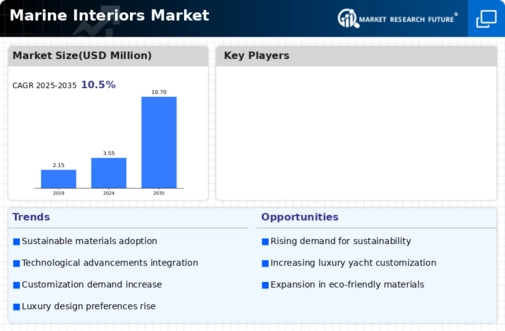Market Share
Marine Interiors Market Share Analysis
The integration of additive manufacturing, commonly known as 3D printing, into the production of marine interiors is a significant factor fueling the demand for the marine interiors market. Additive manufacturing introduces the capability to fabricate intricate geometries and custom designs that are often challenging to achieve using traditional manufacturing methods. This technology not only holds the promise of reducing waste and costs but also enhances efficiency and expedites the manufacturing process. Over recent years, there has been a notable uptick in the utilization of additive manufacturing in the marine industry. An illustrative example is the production of the world's first 3D-printed ship propeller in the Netherlands in 2019. This groundbreaking technology has extended its application to the production of various marine components, including valves, pumps, and even entire sections of a ship's hull. The adoption of additive manufacturing in the creation of marine interiors presents numerous advantages. One key benefit is the ability to craft unique and customized designs, tailored to the specific needs and preferences of individual ships and their passengers. Additionally, additive manufacturing has the potential to reduce the weight of interior components, a factor that not only improves fuel efficiency but also contributes to a diminished environmental impact. However, despite its potential benefits, the incorporation of additive manufacturing in the marine interiors market is not without challenges. Notably, the production of large-scale components using 3D printing can be both time-consuming and expensive, limiting its application to certain components within the marine interiors. Furthermore, regulatory compliance is a critical consideration, and strict adherence to safety standards is essential to ensure the reliability and safety of 3D-printed components. Overcoming these challenges is imperative for the widespread adoption of additive manufacturing in the marine interiors market. As the marine interiors market grapples with these challenges, there is a recognition that the adoption of additive manufacturing presents significant opportunities for growth in the coming years. The ability to create highly customized designs, coupled with the potential for enhanced fuel efficiency, positions additive manufacturing as a transformative force in the industry. With ongoing advancements and a commitment to overcoming challenges, additive manufacturing is poised to play a pivotal role in shaping the future of the marine interiors market, offering innovative solutions that align with the evolving needs of the maritime industry.




Leave a Comment